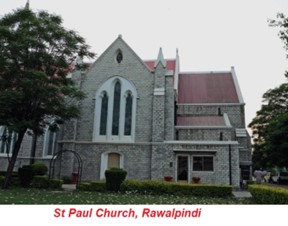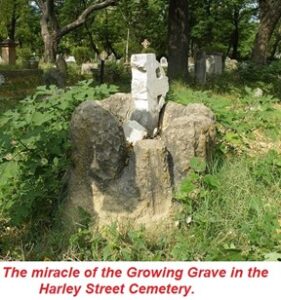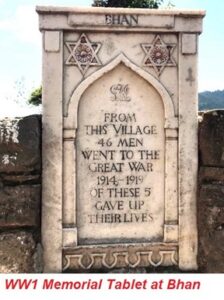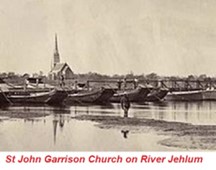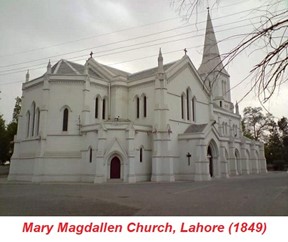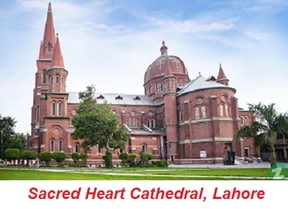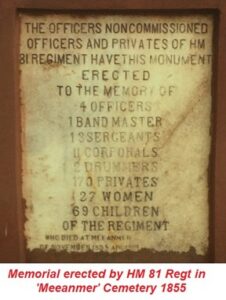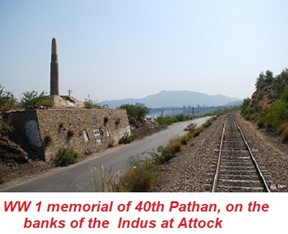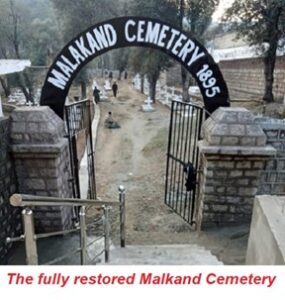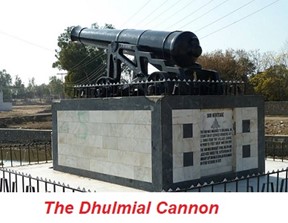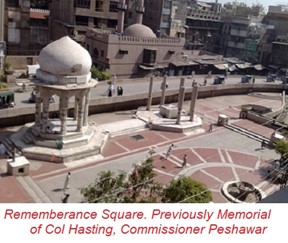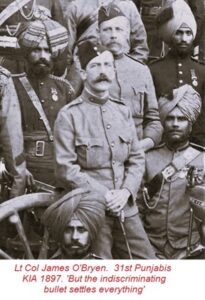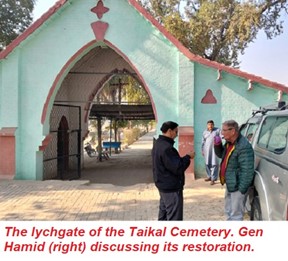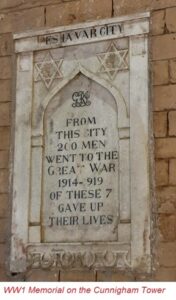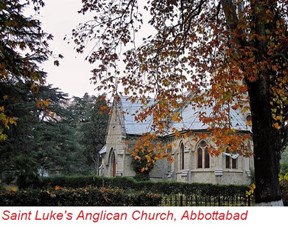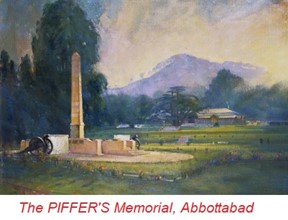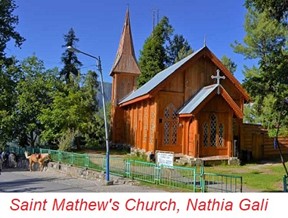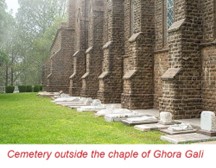THE RAJ TOUR
Adding item to wishlist requires an account
Don't have an account? Create one.
Book now
Tour Details
Step into the past with The Raj Tour, journeying through Punjab and the former NWFP to visit churches, silent cemeteries, and timeworn memorials. Here, tablets and weathered gravestones whisper stories of empire, sacrifice, and survival. Etched in stone, these inscriptions serve as lasting records of the people and moments that shaped the colonial history of the region and bring to life the drama and legacy of British rule.
Departure & Return Location
Islamabad – Islamabad
Departure Time
8:00AM
Price Includes
- ✔ Pick & Drop
- ✔ Dedicated Driver with Private Grand Cabin
- ✔ 2 Quality meals per day
- ✔ Tour Guide
- ✔ Fuel for Vehicle Covered in Tour Plan
- ✔ Jeep Ride
- ✔ All Toll and Taxes included
Price Excludes
-
- ✖ Any item not mentioned above
- ✖ Lunch
- ✖ Medication, evacuation and rescue etc. in emergencies
- ✖ Personal insurances of clients
- ✖ Laundry & phone calls or other expenses of personal.
Itinerary
Day 1:(Arrival in Islamabad)
- Arrive Islamabad Airport and night stay in Rawalpindi.
Day 2:(Rawalpindi, the Garrison City)
- Rawalpindi used to be the HQ of the Northern Command of the British Indian Army and a large base of supporting infrastructure.
 Your first stop will be St. Paul’s Church on the ‘Pindi Mall that was constructed in 1908, making it the second-oldest church in Rawalpindi. A short drive away is Christ Church, whose foundation stone was laid in 1852, only 3 years after the arrival of the first British troops. This makes it one of the oldest buildings in Rawalpindi and in its compound is a marker of the Great Trigonometrical Survey of India which stretched from the southernmost tip of the subcontinent till the mountains in the north. Its again, a short drive to the Harley Street Cemetery which is one of five cemeteries and the largest. As you enter through the lychgate you will be met by its cool calm atmosphere.
Your first stop will be St. Paul’s Church on the ‘Pindi Mall that was constructed in 1908, making it the second-oldest church in Rawalpindi. A short drive away is Christ Church, whose foundation stone was laid in 1852, only 3 years after the arrival of the first British troops. This makes it one of the oldest buildings in Rawalpindi and in its compound is a marker of the Great Trigonometrical Survey of India which stretched from the southernmost tip of the subcontinent till the mountains in the north. Its again, a short drive to the Harley Street Cemetery which is one of five cemeteries and the largest. As you enter through the lychgate you will be met by its cool calm atmosphere.
It contains the graves of people from many walks of life as well the memorial of Lt Gen Henry Marsham Havelock, who was awarded the Victoria Cross during the rebellion of 1857 and killed in the Khyber Pass. His father, Major General Sir Henry Havelock lifted the Siege of Lucknow and his uncle Colonel William Havelock died at the Battle of Ramnagar in 1848.
Next to it is a cemetery maintained by the Commonwealth War Grave Commission that contains 257 Commonwealth burials of the First World War, connected mainly with the operations on the North-West Frontier. There are also 101 burials from the Second World War. Our next stop will be the Garrison Mess which was originally the Rawalpindi Club and has been tastefully restored to its former glory. Here you will be given a talk by Ali Akbar who has encyclopedic knowledge on the History of Rawalpindi Garrison, followed by lunch. In the afternoon we will take a welcome change and be guests of the Murree Brewery which was established in 1860 at Ghora Galli near the resort town of Murree. It met the beer requirements mainly of the British troops and after its original brewery was burnt down its main distilling is done at ‘Pindi.

Day 3:(Rawalpindi & First World War Memorials)
- Today we will be touring through the charming foothills of the Muree Gali Hills to visit 6 memorials erected in villages which contributed a large percentage of their male population to fight in the Great War. Our first stop will be the Army Institute of Military History (AIM) for a talk on The Role of the Rawalpindi Administrative Division in the First World War. We then head up the picturesque valley of the River Soan taking detours to visit the four WW1 Memorials.
Day 4:(On the Grand Trunk Road and Sialkot)
- Today is a mix of Churches, the Great War and Battlefield Memorials. An hour out of Rawalpindi, we enter the territory of the Gakkhars’, a warrior clan who were greatly valued in the cavalry. Twenty minutes off the GT Road is their village of Lehri Rajgan with a memorial tablet. Back on the GT Road we arrive at Jhelum and visit St. John’s Church located beside the river.
 It was built in 1860 and is a landmark of the city. After Independence it remained closed for 40 years but was renovated and reopened. Our next stop is the memorial that commemorated the Battle of Chillianwala (1849), the second last and one of the bloodiest battles of the Anglo-Sikh Wars.
It was built in 1860 and is a landmark of the city. After Independence it remained closed for 40 years but was renovated and reopened. Our next stop is the memorial that commemorated the Battle of Chillianwala (1849), the second last and one of the bloodiest battles of the Anglo-Sikh Wars. A little further ahead we turn off the GT Road to a WW1 memorial at Thuta Rai Bahadur which is next to the foot hills of Kashmir and inhabited by the Chib Rajputs another warrior clan with a long tradition of serving in the British Indian Army. The route to Sialkot, which is our final destination for the day, takes us past Gujrat, the scene of the last battle of the Anglo-Sikh War but there is no memorial to commemorate the British Victory and little to see of the battlefield.
A little further ahead we turn off the GT Road to a WW1 memorial at Thuta Rai Bahadur which is next to the foot hills of Kashmir and inhabited by the Chib Rajputs another warrior clan with a long tradition of serving in the British Indian Army. The route to Sialkot, which is our final destination for the day, takes us past Gujrat, the scene of the last battle of the Anglo-Sikh War but there is no memorial to commemorate the British Victory and little to see of the battlefield.
Day 5:(Cathedral at Sialkot, drive to Lahore)
- First thing in the morning we will visit the Holy Trinity Cathedral Church. Also known as Sialkot Cathedral, it is an Anglican cathedral that was consecrated in 1857 just before the rebellion broke out. After the Second Anglo Sikh War, the weapons of the Sikh Army were melted to make girders for the roof of the Church. Before heading out to Lahore, we will stop by the old Sikh Fort to visit the graves of the British killed during the uprising of 1857.After a 2-hour drive down the motorway we will arrive at the St. Mary Magdalene Church in the Lahore Cantonment.

Originally known as the Mian Mir Cantonment Church, it was initially constructed from wood. In 1849, the British Army commissioned an engineer from the Bengal Regiment, to design a new church. The construction began in 1854 and was completed in 1856, at a cost of Rs. 90,000. Architecturally, the church features Gothic design elements, with its exterior finished in fine lime mortar plastered to resemble white stone tiles. The flooring includes white marble flagstones, that it is believed were taken from the Lahore Fort. The church is being restored by the Walled City of Lahore Authority.

The Lahore Cantonment Cemetery also known as the Lahore Cantonment British Infantry Cemetery has many graves of military personnel and members of their family. It also has a number of memorials including the Lahore Cholera Memorial of 1861. Out of approximately 2,452 European residents, nearly 900 contracted Cholera, resulting in over 500 deaths.
Our last visit for the day is the Sacred Heart Cathedral near the Lahore Mall. Built with Belgian aid and materials, the cathedral was consecrated in 1907. It was designed by a Belgian architect, Edouard Dobbeleers of Antwerp and was based on the Roman Byzantine-style with intricate stained-glass windows and a soaring central nave.

Day 6:(Lahore & by train to Multan)
- We will start our day with a tour of the Lahore Cemetery which contains many graves of famous people. On our way to the railway station, we will stop at the St. Anthony’s Church also known as the “Railway Church” due to its proximity to the railway workshops and offices. The British employed a large number of Indian Christians to work in the railways because they were considered more reliable in running an essential service. It was built in 1899 and its architecture is neo-Gothic in a European style. Time permitting, we will visit the Naulakha Church whose roof is an architectural marvel. After lunch we will catch an express train to Multan which will get us there is 5 hours. Night Stay Multan
Day 8:(Lahore to Islamabad by road. WW1 Memorials)
- After breakfast we will depart for Islamabad via the Motorway. After 3 hours we climb up the Salt Range and enter a belt from which thousands went to serve in WW1. At Kalar Kahr we turn left to visit two WW1 Memorials at Buchal Kalan & Dharukna. We then cut across the Motorway to another site of WW1 Memorial at Dhulmial, the Village with the Gun.
 After a quick visit to the fabled Hindu Temple at Katas which is mentioned in the Mahabharat, head north west to visit two more WW1 memorials at Didhwal and at Thakti where Naik Shahamad who earned his VC in WW1 is also buried. We will arrive in Islamabad for the night.
After a quick visit to the fabled Hindu Temple at Katas which is mentioned in the Mahabharat, head north west to visit two more WW1 memorials at Didhwal and at Thakti where Naik Shahamad who earned his VC in WW1 is also buried. We will arrive in Islamabad for the night.
Day 9:(GT Road to Peshawar)
- This is going to be one of our most interesting days as we head north out of Islamabad on the GT Road. It’s a relatively short drive to the Nicolson’s Memorial, a 40 feet high granite obelisk, that stands on a rocky prominence. A soldier-administrator, John Nicholson became the Victorian “Hero of Delhi” and inspired several books, ballads and generations of young British boys to join the army. After an hour’s drive we cross the mighty Indus and turn downstream under the shadows of the Attock Fort to one of the first memorials raised after the Great War. This 25-foot-tall memorial, shaped like a .303-inch rifle-cartridge, was unveiled on April 26, 1919, the fourth anniversary of the Second Battle of Ypres, where the 40th Pathans suffered significant casualties.
 Having come this far, we will not turn back till we have not had a closer view of the famous Attock Road-Rail Bridge that was opened to traffic in 1883.
Having come this far, we will not turn back till we have not had a closer view of the famous Attock Road-Rail Bridge that was opened to traffic in 1883.
Through another garrison town of Nowshera, we turn right and head to Mardan, and what used to be the home of the Corps of Guides which was a legend in the British Indian Army. Within the preemies of the Punjab Regimental Center is the Guides Memorial, the chapel and cemetery where some distinguished officers are buried. From here it’s a 40 minutes’ drive to the top of the Malakand Pass which was the scene of bitter fighting during the Relief of Chitral Expedition (1895) and the Great Pathan Uprising (1887).

Next to the fort is the Malakand Cemetery that has over 100 graves of British officers and soldiers and was restored in 2024/25 with funding from UK. A short distance back, we will hit the Motorway to take us to Peshawar where we will be spending two nights at The Barracks, a heritage hotel set in tastefully restored barracks of the British era. At dinner you will meet Dr Ali Jan, who is an authority on the history of Peshawar and its surroundings and he will be accompanying you on the tour the next day.
Day 10:(Peshawar)
- First on today’s agenda is a tour of the Taikal Cemetery, the largest of two cemeteries which was established in 1851, and contains marble crosses and headstones with inscriptions that reflect the history of the Raj on the Northwest Frontier.
 Unfortunately, its coolness and shade are gone because its old trees have not been replaced. On record are some 900 inscriptions dating from 1849 but sadly a lot has been vandalized or lost in the scrub. Buried at the cemetery is Robert Warburton one of the great Captains of the Frontier. He married Shah Jahan Begum who had previously been married to Sardar Faiz Talab Khan, a courtier of Amir Dost Muhammad Khan who ruled Afghanistan for 36 years.
Unfortunately, its coolness and shade are gone because its old trees have not been replaced. On record are some 900 inscriptions dating from 1849 but sadly a lot has been vandalized or lost in the scrub. Buried at the cemetery is Robert Warburton one of the great Captains of the Frontier. He married Shah Jahan Begum who had previously been married to Sardar Faiz Talab Khan, a courtier of Amir Dost Muhammad Khan who ruled Afghanistan for 36 years.
We then visit the Cathedral Church of St John which is located in the cantonment next to the Peshawar Club. It was formerly a garrison church and called St. John’s Church. It took 10 years to be completed because halfway the structure was demolished by an earthquake. Buried within the premises of the Cathedral are bodies of some British officers who were killed in action while fighting on the frontier, including that of Lieutenant Colonel James O’Bryen.

He was KIA while commanding the 31st Punjabis in an attack during the operations of the Malakand Field Force 1897. His death in action Churchill eloquently mourns within the pages of his book – The Story of the Malakand Field Force. But the indiscriminating bullet settles everything. As the poet somewhat grimly has it – Stone-dead hath no better.
Nearby is the Mackenson Tomb. Col Frederick Mackeson (1807-1853) was one of Henry Lawrence’s “Young Men” whose reputation was enhanced during the First Anglo-Afghan War. He was described as an “excellent officer, first-rate linguist, a man of such temper that no native would disturb and of untiring energy”. In 1850, he was selected to escort the Koh-I-Noor diamond to Britain which was to be presented to Queen Victoria as a gift from the East India Company. He was murdered by a fanatic while listening to appeals in his veranda.

From the dead to the living, we head to the vibrant Qissa Kahani Bazaar – the Bazaar of the Story Tellers. En route we stop by the tomb of Nawab Sayed Khan, which was the first HQ of the Corps of Guides. At the entrance to the bazaar is Chowk Yadgar or Remembrance Square. It was originally built as the Hasting Memorial in 1884 in remembrance of the first British Commissioner of Peshawar, Col E.C. Hastings, Bengal Cavalry, who in 1880 accompanied General Robert’s Kabul Field Force to Cabul as chief political officer.

Further ahead is the Cunningham Clock Tower which was constructed in 1900 to commemorate Queen Victoria’s Diamond Jubilee (1897). However, it was later named after Sir George Cunningham, who served as governor of the province. Embedded on the tower is a WW1 memorial that records that from Peshawar City 200 went fight in the Great War and 7 died. In the evening you will be entertained to a traditional BBQ.
Day 11:(Abbottabad & Nathia Gali)
- We depart Peshawar on the Motorway for 2 hours scenic drive to Abbottabad at an elevation of 4000 feet. At one time the small town was the HQ of the Punjab Frontier Force and in the early 20th century, it became an important military cantonment with a brigade of the Northern Army Command and the training center of a Gurkha Regiment.
 Following a tour of St Luke’s Anglican Church which took 10 years to be completed because of shortage of funds and the interruption by the rebellion of 1857, we head to the Old Christian Cemetery. It contains many interesting graves and memorials many connected with the Frontier military campaigns including the graves of Major Leigh Richmond Battye whose murder by a tribesman, precipitated the 1888 Black Mountain Expedition. He was one of the Battye brothers/cousins, a legendary military family with deep ties to the Punjab Frontier Force. Several members of the family served in elite regiments & were often described as “handsome, gallant, and doomed” — a Victorian-era phrase acknowledging their frequent early deaths in combat.
Following a tour of St Luke’s Anglican Church which took 10 years to be completed because of shortage of funds and the interruption by the rebellion of 1857, we head to the Old Christian Cemetery. It contains many interesting graves and memorials many connected with the Frontier military campaigns including the graves of Major Leigh Richmond Battye whose murder by a tribesman, precipitated the 1888 Black Mountain Expedition. He was one of the Battye brothers/cousins, a legendary military family with deep ties to the Punjab Frontier Force. Several members of the family served in elite regiments & were often described as “handsome, gallant, and doomed” — a Victorian-era phrase acknowledging their frequent early deaths in combat.
Next to the cemetery is the Piffer’s Memorial that was originally erected in Kohat to commemorate those who lost their lives in the two World Wars. Following a light lunch courtesy of the Piffer’s Mess we depart for the hill station of Nathia Gali. Located at a height of 8,200 feet, it used to be the summer capital of the British Northwest Frontier Province. At Nathia we will visit St. Matthew’s Church.

It was built entirely of cedar wood in 1914 and was designed by Colonel Hope Waddell Kelsall. Its caretakers are a Muslim family. Night stay in Nathia Gali.
Day 12:(Murree & back to Islamabad)
- The Holy Trinity Church, is accessed from the Mall in Murree which is very crowded in summer with tourists. The church was completed in 1875 and originally it was of red brick, but converted into a grey-brick structure. Queen Elizabeth II visited Murree during her second official tour of Pakistan in October 1997 and prayed at this church. At the northern edge of the Murree is St. Denys’ Chapel built in 1857. Before the Holy Trinity Church, it served British military and civil officers stationed in Murree, which was then the summer headquarters of the Punjab Government. The chapel reflects a simple colonial ecclesiastical architecture—likely stone-built with lancet windows and wooden interiors. It’s a short drive to a historic and probably the largest of the pre-Partition cemeteries. Spread over a large area, the Old Murree Cemetery, has many graves of British soldiers, officials, and their families but sadly it has been abandoned and vandalized.We will take the old road down to Islamabad and en-route visit the Lawrence College at Ghora Gali which was established in 1860 and is one of the oldest residential educational institutions in Pakistan.

Within its ground is the College Chapel established around 1868. This stone-brick chapel features a clock tower and is a significant architectural and historical landmark. A small British cemetery dating back to the late 19th and early 20th centuries is next to its outer wall.
Arrive Islamabad and catch outbound flights home.

